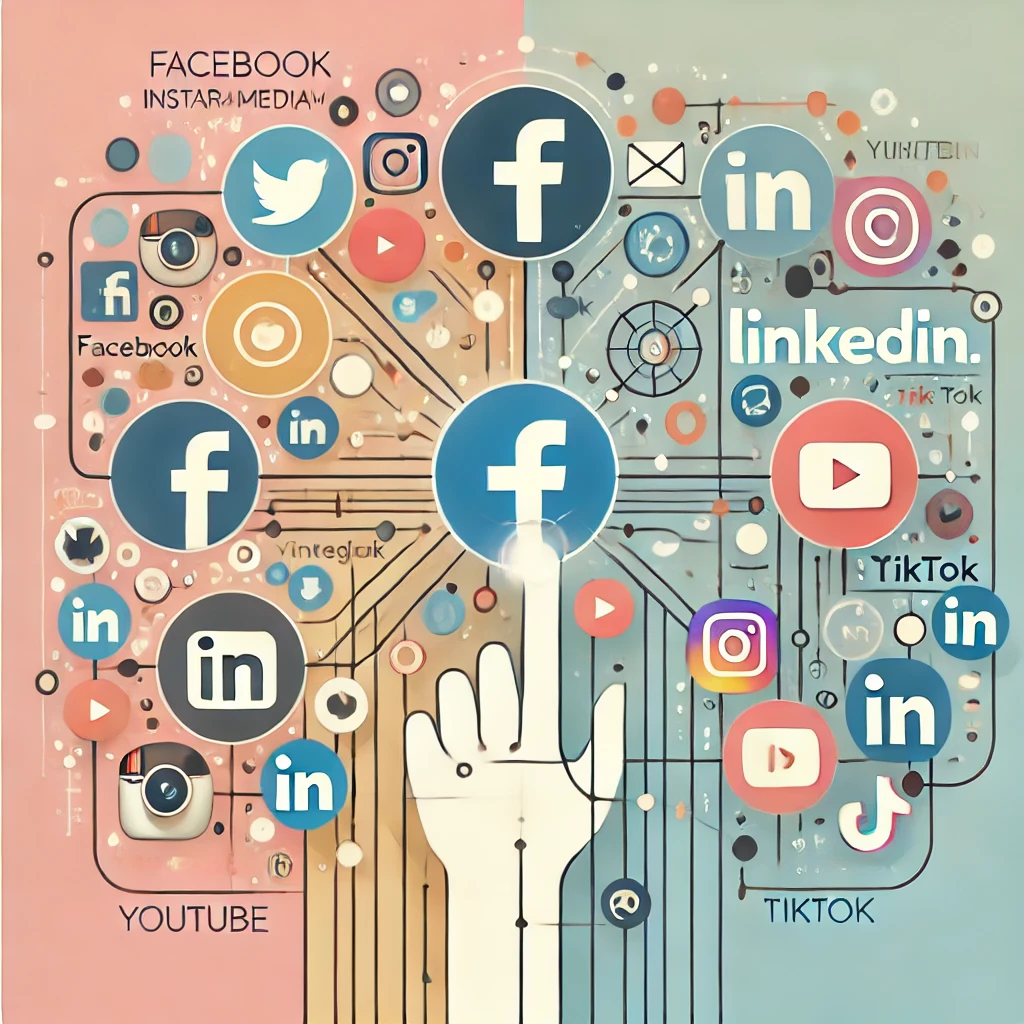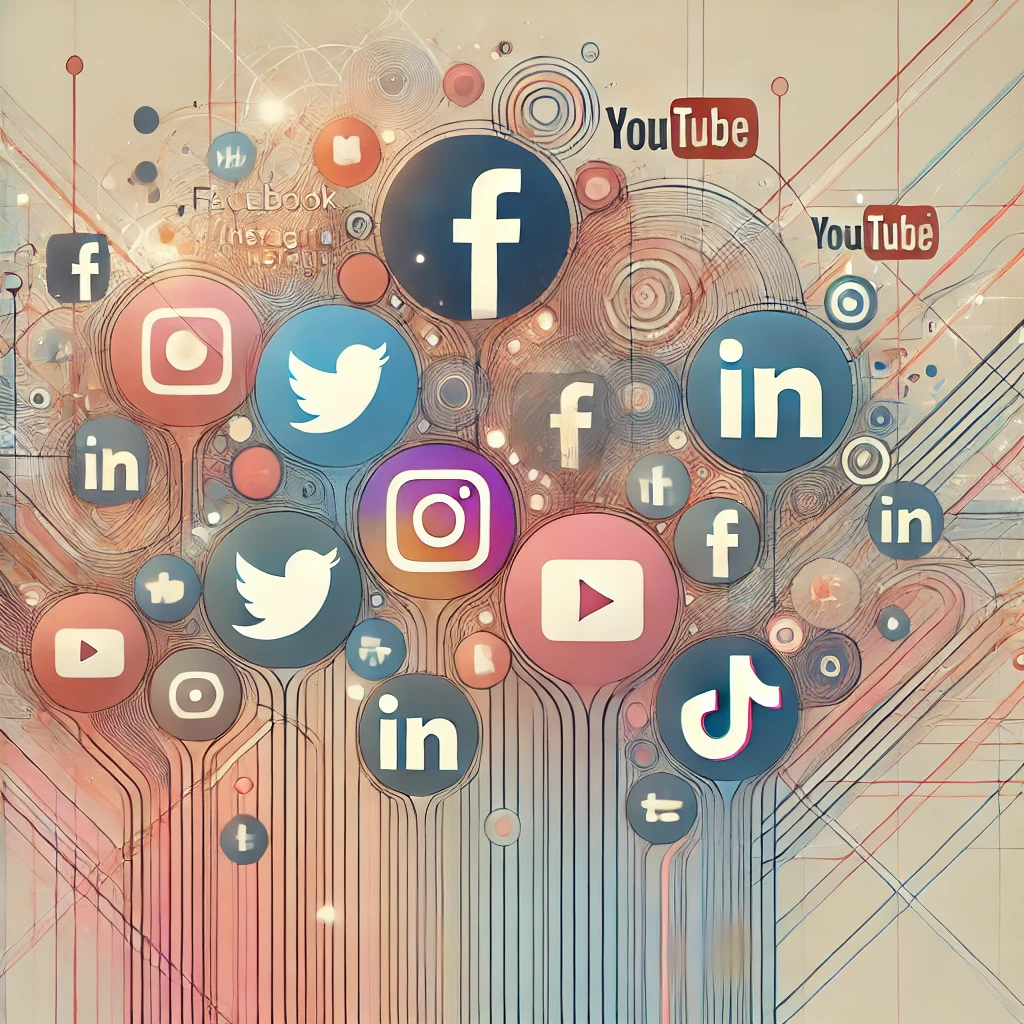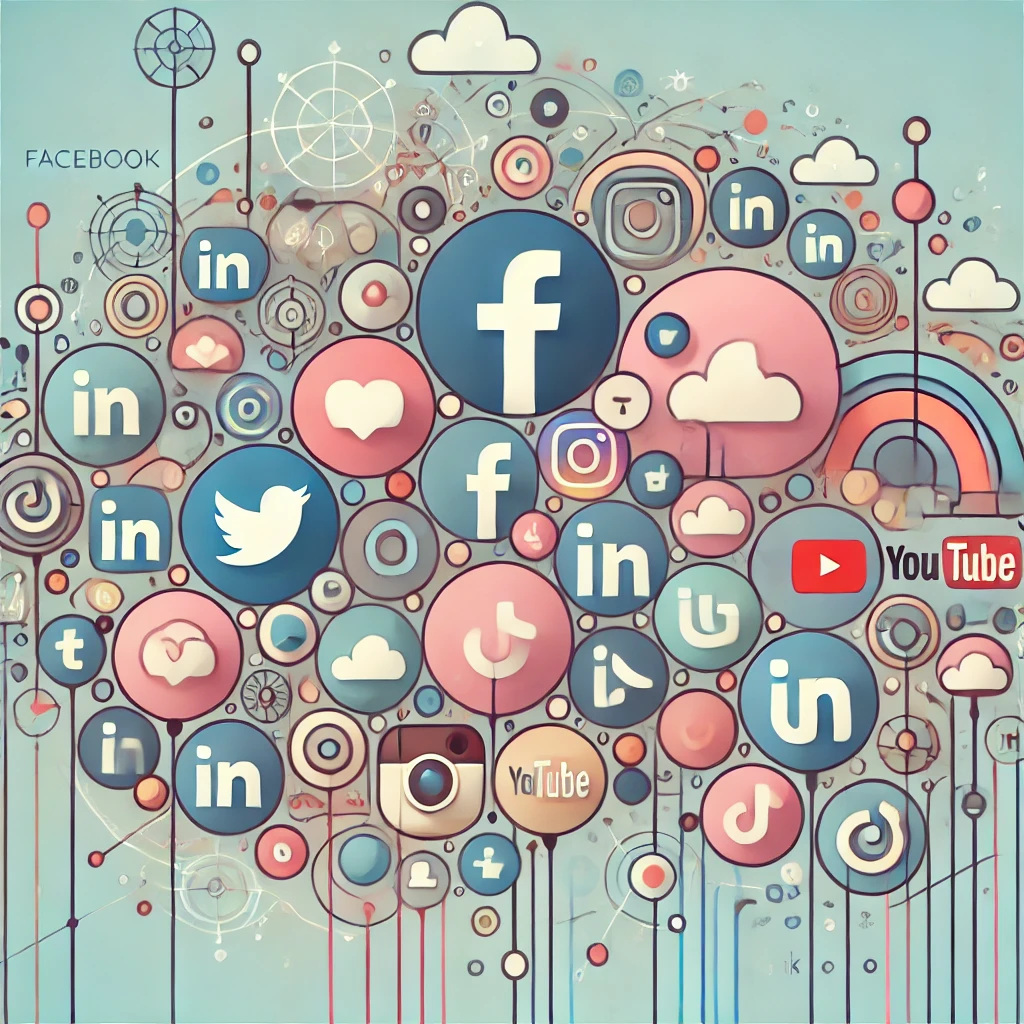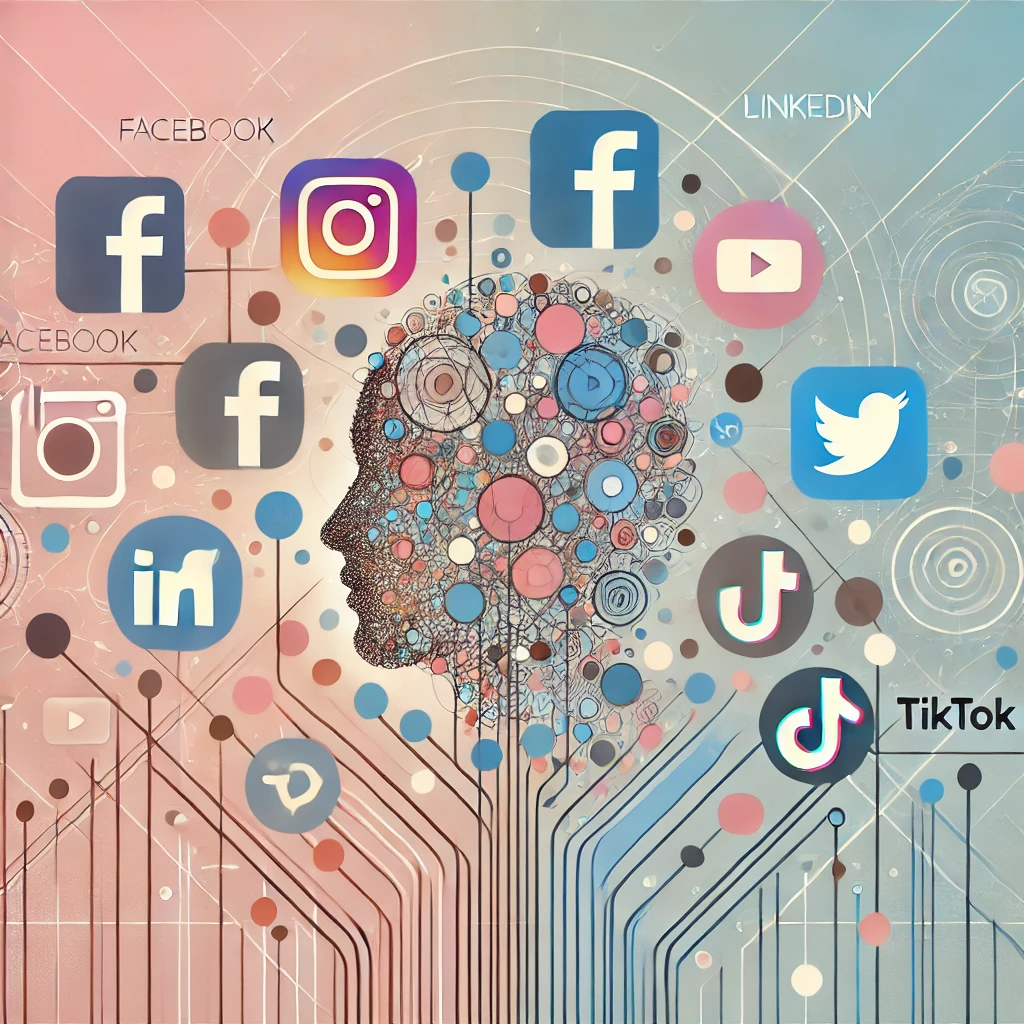
Maximizing Reach: Best Social Media Platforms for Drug Rehab Marketing
Table of Contents
social media platforms for drug rehab
Introduction
Importance of Social Media in Drug Rehab Marketing
Social media has become an essential tool in marketing for various industries, including drug rehabilitation. For drug rehab centers, leveraging social platforms is crucial to reach and engage the target audience effectively. These platforms offer unique opportunities to connect with individuals seeking help and support for addiction recovery. Here's why social media is vital for drug rehab marketing:
- Wide Reach: Social media platforms have millions of active users, providing a vast audience for drug rehab centers to tap into.
- Cost-Effective: Compared to traditional marketing methods, social media marketing can be more affordable while offering extensive reach and engagement.
- Targeted Advertising: Social media platforms allow for highly targeted ads, ensuring that your message reaches the right people who need your services.
- Engagement and Interaction: Social media enables real-time interaction with potential patients, fostering trust and providing immediate support and information.
- Brand Awareness: Regularly posting valuable content helps build brand recognition and credibility in the eyes of your audience.
Overview of Top Social Media Platforms
To maximize the reach and effectiveness of your drug rehab marketing efforts, it's important to focus on the best social media platforms available. Here’s an overview of the top platforms that can help promote your drug rehab center:
- Facebook:
- User Base: Over 2.8 billion active users.
- Features: Facebook offers a variety of tools including posts, stories, ads, and groups, making it a versatile platform for engagement and content sharing.
- Benefits: It is excellent for creating a community around your rehab center, sharing success stories, and running targeted ad campaigns.
- Instagram:
- User Base: Over 1 billion active users.
- Features: Instagram is ideal for visual content, with options like posts, stories, reels, and IGTV.
- Benefits: It’s perfect for showcasing testimonials, behind-the-scenes looks at your center, and inspirational content to engage with a younger audience.
- Twitter:
- User Base: Over 330 million active users.
- Features: Twitter allows for quick updates, news sharing, and real-time engagement.
- Benefits: It is great for staying connected with your audience through updates, engaging in conversations, and sharing educational content about addiction and recovery.
- LinkedIn:
- User Base: Over 740 million professionals.
- Features: LinkedIn is a professional networking platform that is ideal for sharing research, connecting with healthcare professionals, and building partnerships.
- Benefits: It’s beneficial for B2B marketing, connecting with other healthcare providers, and positioning your rehab center as a thought leader in the addiction treatment field.
- YouTube:
- User Base: Over 2 billion active users.
- Features: YouTube allows for long-form video content which can be used for educational videos, patient testimonials, and live Q&A sessions.
- Benefits: It’s a powerful platform for building a library of valuable video content that can educate and inspire potential patients and their families.
By focusing on these platforms, drug rehab centers can effectively reach and engage their target audience, promote their services, and provide valuable support and information to those in need.
Facebook: A Comprehensive Tool for Rehab Marketing
Facebook is one of the most powerful social media platforms for drug rehab marketing. Its vast user base and versatile features make it ideal for connecting with potential patients and engaging your audience. By effectively utilizing Facebook, rehab centers can promote their services, build a supportive community, and boost patient engagement.
Creating Engaging Content
Content is the cornerstone of any social media strategy. For drug rehab centers, creating engaging and informative content on Facebook can significantly impact your online presence and patient engagement.
- Success Stories: Share patient success stories and testimonials to provide hope and build trust.
- Educational Posts: Post informative content about addiction treatment, recovery tips, and health advice.
- Visual Content: Use images and videos to capture attention and convey messages effectively.
- Interactive Posts: Encourage interaction by posting questions, polls, and live Q&A sessions.
Engaging content helps to establish your rehab center as a trustworthy and knowledgeable resource, which can attract and retain followers.
Utilizing Facebook Ads
Facebook ads are a cost-effective way to reach a targeted audience. With detailed targeting options, you can ensure your ads reach those who are most likely to need your services.
- Targeted Advertising: Use demographics, interests, and behaviors to target specific groups, such as individuals interested in addiction recovery or their families.
- Ad Formats: Utilize various ad formats like carousel ads, video ads, and sponsored posts to capture attention.
- Remarketing: Implement remarketing strategies to reach people who have previously interacted with your content or visited your website.
Effective use of Facebook ads can drive traffic to your website, increase inquiries, and boost conversions.
Building a Supportive Community
Building a supportive online community on Facebook can provide significant benefits for both your rehab center and your patients.
- Facebook Groups: Create and manage Facebook groups focused on addiction recovery support. These groups offer a safe space for patients and their families to share experiences and support each other.
- Engagement: Actively engage with group members by responding to comments, posting regularly, and facilitating discussions.
- Resource Sharing: Share valuable resources, such as articles, videos, and links to helpful services, to support group members in their recovery journey.
A supportive community fosters a sense of belonging and trust, which can enhance patient retention and satisfaction.
By leveraging Facebook's features effectively, drug rehab centers can maximize their reach and engagement, ultimately helping more individuals on their path to recovery.

Instagram: Visual Storytelling for Rehab Centers
Instagram is a powerful platform for drug rehab marketing, especially given its emphasis on visual content. Using Instagram effectively can help rehab centers connect with potential patients and their families by sharing compelling stories and valuable information. Here’s how to maximize Instagram for your rehab center.
Sharing Success Stories and Testimonials
Success stories and testimonials are highly impactful on Instagram. They provide real-life examples of recovery, instilling hope and trust in potential patients.
- Patient Testimonials: Share short video clips or written testimonials with photos of patients who have successfully completed your program.
- Before and After Stories: Use images and captions to tell before-and-after stories of recovery, showing the progress and transformation.
- Staff Highlights: Introduce your team through posts that highlight their dedication and expertise, helping to build a personal connection with your audience.
These stories not only promote your services but also create an emotional connection with viewers, encouraging them to reach out for help.
Using Instagram Stories and Reels
Instagram Stories and Reels are excellent tools for engaging your audience in a more dynamic and interactive way.
- Daily Updates: Share behind-the-scenes looks at your facility, day-to-day activities, and events. This transparency can build trust.
- Educational Content: Use Stories to share tips on addiction recovery, mental health, and wellness practices. Short, informative Reels can be particularly effective.
- Interactive Features: Utilize polls, Q&A stickers, and quizzes in your Stories to encourage interaction and engagement from your followers.
By using these features, you can keep your audience engaged and informed, making your Instagram presence more impactful.
Leveraging Hashtags for Broader Reach
Hashtags are a key part of Instagram strategy, helping your content reach a wider audience.
- Relevant Hashtags: Use hashtags related to drug rehab marketing, addiction recovery, and mental health to reach users interested in these topics.
- Branded Hashtags: Create unique hashtags for your rehab center to promote your brand and make it easier for users to find your content.
- Trending Hashtags: Keep an eye on trending hashtags related to health and wellness and incorporate them into your posts when appropriate.
Using the right hashtags can significantly increase the visibility of your posts, attracting more followers and potential patients.
By effectively utilizing Instagram’s features, drug rehab centers can tell powerful stories, engage with their audience, and expand their reach. This visual storytelling approach not only promotes your services but also fosters a supportive community for those seeking help.
Twitter: Real-Time Engagement with Your Audience
Twitter is an excellent platform for real-time engagement, making it a valuable tool for drug rehab marketing. Its fast-paced nature allows rehab centers to connect with their audience instantly, share timely updates, and foster an interactive community. Here’s how to leverage Twitter effectively for your rehab center.
Engaging in Conversations
Engaging in conversations on Twitter helps build relationships and trust with your audience. Here’s how to do it effectively:
- Respond to Mentions and Comments: Actively monitor and respond to mentions and comments. This shows that you value your audience’s input and are willing to engage with them.
- Participate in Relevant Discussions: Join conversations about addiction recovery, mental health, and related topics. Use relevant hashtags to find and participate in these discussions.
- Ask Questions: Post questions to encourage interaction. This can include asking about recovery experiences, what kind of support people are looking for, or their thoughts on addiction-related news.
By engaging in conversations, you can build a supportive community and position your rehab center as an approachable and knowledgeable resource.
Sharing News and Updates
Twitter is perfect for sharing real-time news and updates. Here’s what you should share:
- Center Updates: Keep your followers informed about any changes or news related to your rehab center, such as new programs, staff additions, or facility improvements.
- Industry News: Share the latest news and research related to addiction treatment and recovery. This positions your center as an informed and active participant in the field.
- Success Stories: Share brief success stories and testimonials. These posts can inspire and offer hope to those struggling with addiction.
Regularly sharing news and updates helps keep your audience informed and engaged with your center’s activities.
Using Twitter Chats for Support
Twitter chats are a great way to offer support and build a sense of community among your followers. Here’s how to use them effectively:
- Host Regular Chats: Schedule regular Twitter chats focused on topics related to addiction recovery. Promote these chats in advance to attract participants.
- Use Hashtags: Create a unique hashtag for your Twitter chat to make it easy for people to follow and participate in the conversation.
- Invite Experts: Invite experts in addiction recovery to participate in your chats. This can provide valuable insights and increase the credibility of your chats.
- Engage Actively: During the chat, actively engage with participants by answering questions, providing resources, and encouraging interaction among participants.
Twitter chats can create a dynamic and supportive environment where individuals feel comfortable sharing their experiences and seeking advice.
By effectively using Twitter for real-time engagement, sharing updates, and hosting support chats, drug rehab centers can enhance their online presence and connect with their target audience more effectively.

LinkedIn: Professional Networking for Rehab Services
LinkedIn is a valuable platform for drug rehab marketing, especially when it comes to professional networking. By leveraging LinkedIn, rehab centers can connect with healthcare professionals, share research and insights, and participate in or create groups dedicated to addiction recovery. Here's how to maximize LinkedIn for your rehab services.
Connecting with Healthcare Professionals
Building connections with healthcare professionals on LinkedIn can enhance your rehab center’s network and credibility.
- Send Connection Requests: Reach out to doctors, therapists, counselors, and other professionals in the addiction recovery field.
- Personalize Messages: When sending connection requests, personalize your messages to explain why you want to connect and how it could be mutually beneficial.
- Engage with Content: Regularly engage with posts from your connections by liking, commenting, and sharing their content. This helps build relationships and keeps your rehab center visible in their network.
Connecting with healthcare professionals can lead to referrals, partnerships, and collaborations that can benefit your rehab center.
Sharing Research and Insights
Sharing valuable content on LinkedIn helps establish your rehab center as a thought leader in addiction recovery.
- Post Articles: Write and share articles on addiction treatment, recovery techniques, and success stories. Use relevant keywords to improve visibility.
- Share Case Studies: Provide detailed case studies that highlight successful recovery programs and patient outcomes.
- Update Regularly: Keep your audience informed with regular updates on new research findings, industry trends, and insights from your team.
By consistently sharing research and insights, you can attract attention from healthcare professionals, potential patients, and their families, boosting your online presence and credibility.
Joining and Creating LinkedIn Groups
LinkedIn Groups offer a platform for discussion, support, and knowledge sharing among professionals and those interested in addiction recovery.
- Join Relevant Groups: Participate in groups related to addiction recovery, mental health, and healthcare. Contribute to discussions and share your expertise.
- Create Your Own Group: Start a LinkedIn Group focused on addiction recovery support. This can provide a platform for professionals to share insights and for patients and families to find support and information.
- Engage Actively: In your group, post regularly, respond to comments, and encourage discussions. Share valuable resources and updates to keep the group active and engaging.
Creating and participating in LinkedIn Groups can help build a community around your rehab center, providing support and resources for both professionals and individuals seeking help.
By effectively utilizing LinkedIn, drug rehab centers can strengthen their professional network, share valuable insights, and create supportive communities, ultimately enhancing their reach and engagement.

YouTube: Video Content for Education and Inspiration
YouTube is a powerful platform for drug rehab marketing, providing an opportunity to reach a broad audience through engaging video content. By creating informative videos, sharing patient stories, and hosting live Q&A sessions, rehab centers can educate, inspire, and connect with their audience effectively.
Creating Informative Videos
Informative videos are essential for establishing your rehab center as a trusted source of knowledge and support.
- Educational Content: Create videos that explain the addiction recovery process, different types of treatments available, and tips for maintaining sobriety. Use keywords like "drug rehab marketing" and "social media promotion" to optimize your content.
- How-To Guides: Produce step-by-step guides on coping strategies, healthy lifestyle changes, and managing triggers. These videos can help potential patients understand what to expect and how to prepare for recovery.
- Expert Interviews: Feature interviews with healthcare professionals and addiction specialists. This provides credibility and valuable insights to your audience.
Regularly posting educational videos can increase your online presence and provide much-needed information to those seeking help.
Sharing Patient Stories
Patient stories are a powerful way to inspire hope and build trust with your audience.
- Testimonial Videos: Share video testimonials from former patients who have successfully completed your program. Highlight their recovery journey and the support they received from your center.
- Day-in-the-Life: Create videos that showcase a day in the life of a patient at your rehab center. This gives potential patients a realistic view of what to expect.
- Success Stories: Post videos that celebrate the milestones and successes of your patients. These stories can motivate others to seek help and show the effectiveness of your programs.
By sharing patient stories, you humanize your rehab center and provide relatable content that can encourage others to reach out.
Hosting Live Q&A Sessions
Live Q&A sessions on YouTube allow for real-time interaction with your audience, providing immediate support and answers.
- Scheduled Sessions: Host regular live Q&A sessions where viewers can ask questions about addiction recovery, treatment options, and your rehab programs.
- Interactive Engagement: Encourage viewers to participate by submitting questions in advance or during the live session. This increases engagement and makes your audience feel heard.
- Expert Participation: Invite addiction specialists and therapists to join your live sessions. Their expertise can provide in-depth answers and valuable insights.
Hosting live Q&A sessions fosters a sense of community and provides immediate, personalized support to your audience.
By effectively using YouTube to create informative videos, share patient stories, and host live Q&A sessions, drug rehab centers can enhance their online presence, educate their audience, and inspire hope and trust in their services.
TikTok: Reaching Younger Audiences
TikTok has rapidly become one of the best social media platforms for drug rehab marketing, especially for targeting younger audiences. Its unique format allows for short, impactful videos that can quickly capture attention and convey important messages. Here’s how to leverage TikTok effectively for your rehab center.
Creating Short, Impactful Videos
Creating engaging and informative short videos is key to succeeding on TikTok.
- Educational Content: Share quick tips on addiction recovery, coping strategies, and wellness practices. Use visuals and simple language to make the information easy to understand and remember.
- Personal Stories: Feature brief testimonials and recovery stories from former patients. These personal accounts can inspire and motivate viewers.
- Behind-the-Scenes: Give a glimpse into the daily life at your rehab center. Show the facilities, introduce the staff, and highlight the activities and treatments available.
Short, impactful videos can effectively communicate your message and make a strong impression on viewers.
Using Trends to Raise Awareness
TikTok trends offer a great opportunity to increase your reach and engagement.
- Participate in Challenges: Join popular challenges and adapt them to your message. This can make your content more relatable and engaging.
- Use Trending Music and Effects: Incorporate trending music and effects to make your videos more appealing and likely to be seen by a wider audience.
- Create Your Own Challenges: Start your own challenge that encourages positive behavior or awareness about addiction recovery. Promote it with a unique hashtag to track participation.
By tapping into trends, you can boost your visibility and connect with a broader audience.
Collaborating with Influencers
Working with influencers can significantly expand your reach on TikTok.
- Identify Relevant Influencers: Look for influencers who focus on mental health, wellness, and recovery. Their audience is likely to be interested in your content.
- Collaborate on Content: Partner with influencers to create videos that discuss addiction recovery, share success stories, or highlight your rehab center’s programs.
- Leverage Their Reach: Influencers can help spread your message to a larger audience, increasing your brand’s credibility and visibility.
Collaborating with influencers can enhance your marketing efforts and attract more potential patients to your rehab center.
By effectively using TikTok to create short, impactful videos, leverage trends, and collaborate with influencers, drug rehab centers can reach and engage younger audiences, raising awareness and promoting their services.

Best Practices for Social Media Marketing in Drug Rehab
Effective social media marketing can significantly enhance the visibility and engagement of drug rehab centers. Implementing best practices ensures that your efforts yield the best possible results. Here’s how to optimize your social media strategy for drug rehab marketing.
Consistent Posting Schedule
Maintaining a consistent posting schedule is crucial for keeping your audience engaged and your online presence strong.
- Regular Updates: Post regularly to keep your audience informed and engaged. This includes sharing new content, updates about your center, and relevant information about addiction recovery.
- Content Calendar: Create a content calendar to plan and schedule your posts in advance. This helps ensure that your content is timely and relevant.
- Balanced Content Mix: Include a mix of content types such as educational articles, patient stories, staff highlights, and interactive posts like polls and Q&A sessions.
Consistency helps build a reliable online presence, making it easier for your audience to stay connected with your rehab center.
Engaging with Followers
Engagement is key to building a loyal and supportive online community.
- Respond to Comments and Messages: Actively monitor and respond to comments and direct messages. This shows that you value your audience’s input and are available to support them.
- Interactive Posts: Encourage engagement through interactive posts. Ask questions, create polls, and invite your followers to share their experiences or opinions.
- Live Interactions: Use live features on platforms like Facebook, Instagram, and YouTube to host live Q&A sessions, virtual tours of your center, and real-time discussions about addiction recovery.
Engaging with your followers helps build trust and fosters a sense of community, which is vital for supporting individuals in recovery.
Monitoring Analytics
Regularly monitoring your social media analytics helps you understand what’s working and where you can improve.
- Track Key Metrics: Pay attention to metrics such as engagement rates, follower growth, and post reach. These indicators provide insights into your audience’s preferences and behaviors.
- Adjust Strategies: Use the data from your analytics to adjust your strategies. If certain types of content receive more engagement, focus on creating more of that content.
- Report and Review: Regularly review your social media performance and create reports to track your progress. This helps you stay on top of your goals and make informed decisions.
Monitoring analytics allows you to optimize your social media efforts, ensuring that your content reaches and resonates with your target audience.
By following these best practices for social media marketing, drug rehab centers can boost engagement, promote their services, and build a supportive online community for those seeking help.
Conclusion
Leveraging social media platforms is crucial for drug rehab centers aiming to engage their target audience and promote their services. By focusing on the best social media platforms, such as Facebook, Instagram, Twitter, LinkedIn, YouTube, and TikTok, rehab centers can maximize their reach and effectiveness. Each platform offers unique features that can be tailored to meet specific marketing goals.
Summary of the Best Platforms and Strategies
- Facebook: Ideal for building a community through groups and sharing a mix of content types, including posts, stories, and ads. Use Facebook Ads for targeted marketing and create engaging content to foster trust and interaction.
- Instagram: Leverage visual storytelling with posts, stories, and reels. Share patient success stories, educational content, and behind-the-scenes looks to connect with a younger audience.
- Twitter: Engage in real-time conversations, share updates, and use Twitter chats to provide support and build a dynamic community.
- LinkedIn: Network with healthcare professionals, share research and insights, and participate in or create groups focused on addiction recovery to establish your rehab center as a thought leader.
- YouTube: Create informative videos, share patient testimonials, and host live Q&A sessions to educate and inspire your audience. Use this platform to build a library of valuable content.
- TikTok: Reach younger audiences with short, impactful videos. Participate in trends, create engaging content, and collaborate with influencers to raise awareness and promote your services.
Encouragement to Leverage Social Media for Greater Reach and Engagement
Social media marketing is a powerful tool for drug rehab centers. By implementing effective strategies across multiple platforms, you can significantly boost your online presence, engage with potential patients, and build a supportive community. Consistency in posting, engaging with followers, and monitoring analytics are essential practices to ensure success.
By understanding the unique strengths of each platform and tailoring your content accordingly, you can maximize your reach and impact. Social media allows for real-time interaction, personal connections, and the ability to share valuable information that can guide individuals toward seeking help and support.
Questions You Might Ponder
Why is social media important for drug rehab marketing?
Social media is vital for drug rehab marketing because it allows centers to reach a large audience cost-effectively. Platforms like Facebook, Instagram, and Twitter offer tools for targeted advertising, real-time engagement, and building brand awareness. These features enable rehab centers to connect with individuals seeking help, provide immediate support, and foster trust. Regularly posting valuable content helps in establishing credibility and promoting the services effectively.
What are the best social media platforms for drug rehab centers?
The best social media platforms for drug rehab centers include Facebook, Instagram, Twitter, LinkedIn, YouTube, and TikTok. Each platform has unique features that cater to different marketing needs. Facebook is great for community building, Instagram excels in visual storytelling, Twitter offers real-time engagement, LinkedIn focuses on professional networking, YouTube is ideal for educational videos, and TikTok helps reach younger audiences with short, impactful content.
How can Facebook be used effectively for drug rehab marketing?
Facebook can be used effectively for drug rehab marketing by creating engaging content, utilizing Facebook Ads, and building a supportive community. Share patient success stories, educational posts, and interactive content like polls and live Qu0026amp;A sessions. Use targeted ads to reach specific groups and create Facebook groups focused on addiction recovery support. Regular engagement with group members and sharing valuable resources can foster a sense of community and trust.
What type of content works best on Instagram for rehab centers?
On Instagram, visual content works best for rehab centers. Sharing patient testimonials, before-and-after stories, and behind-the-scenes looks at the center can engage the audience. Using Instagram Stories and Reels for daily updates, educational tips, and interactive features like polls and Qu0026amp;A stickers can keep followers engaged. Leveraging relevant and trending hashtags can also help in reaching a broader audience and increasing visibility.
What strategies can be employed on LinkedIn for professional networking in rehab services?
On LinkedIn, rehab centers can enhance professional networking by connecting with healthcare professionals, sharing research and insights, and joining or creating LinkedIn Groups. Send personalized connection requests, engage with your network’s content, and regularly post articles, case studies, and updates. Participating in or starting groups dedicated to addiction recovery can provide a platform for discussion, support, and knowledge sharing, thereby strengthening your professional network.
What are the best practices for maintaining a consistent posting schedule in social media marketing for rehab centers?
Maintaining a consistent posting schedule involves regularly updating your social media platforms with fresh content. Create a content calendar to plan and schedule posts in advance, ensuring timeliness and relevance. Include a balanced mix of content types, such as educational articles, patient stories, and interactive posts. Regular updates help keep your audience engaged, maintain a strong online presence, and make it easier for followers to stay connected with your rehab center.
How can you enhance your social media strategy to better reach your audience? Start optimizing your social media presence today.